The Complete Costa Rica Currency Guide
This post may contain affiliate links.
A guide to Costa Rica currency- everything you need to know about Costa Rican money when traveling to Costa Rica.
As you plan your trip to Costa Rica, one of the first things that comes to mind is money. No one wants to be in a foreign country sans funds, and if you are anything like me, you also want to get the best exchange rate, tip correctly, and keep your money safe.
This guide has everything you need to know about Costa Rican money- from recognizing the bills to finding the best exchange rates. You’ll definitely want to bookmark this post for your trip!
Related post: 30+ Foods To Try In Costa Rica
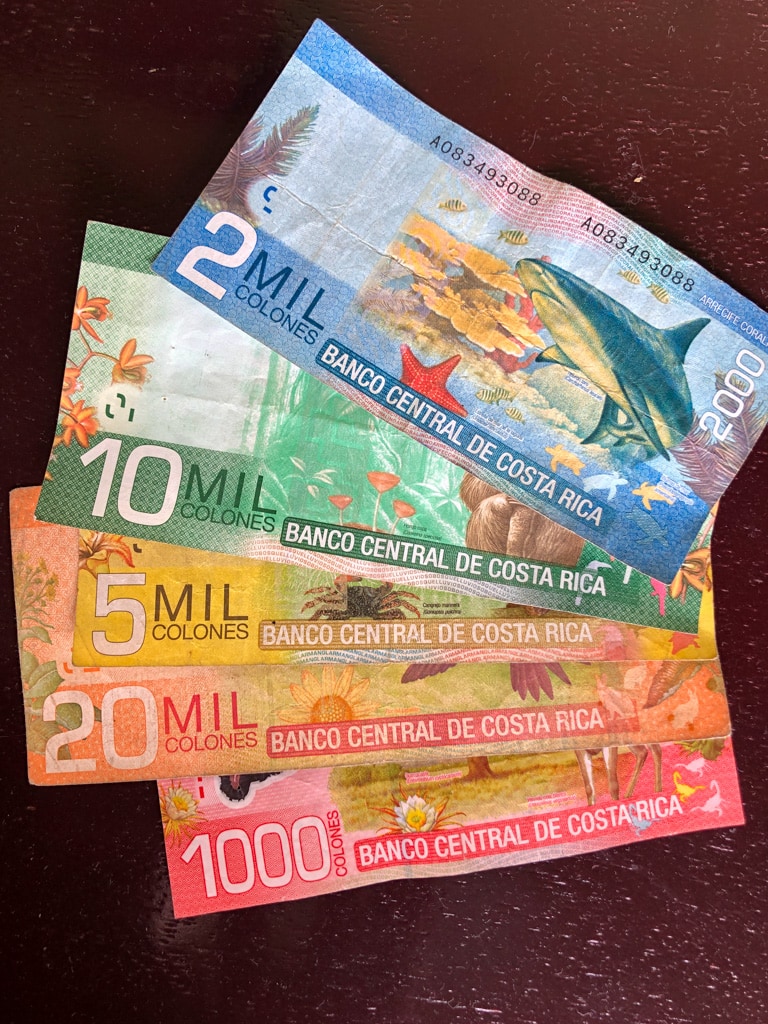
About Costa Rica Currency
What currency is used in Costa Rica?
Costa Rica’s national currency is the colón, aptly named after Christopher Columbus (named Cristobál Colón in Spanish). The plural of colón is colones, and you will most often hear the money being referred to as colones.
History of the Colón
In pre-Columbian times, the indigenous populations of Central America used highly prized materials such as jade stones or cocoa beans as a form of currency. When colonization brought money in the modern sense to the Americas, Costa Rica first used a currency called the peso – just like its colonizers from Spain.
The peso was replaced in 1896 with the colón, which has been the national currency ever since. Besides national heroes such as the former presidents Braulio Carillo Colina, Alfredo Gonzales Flores, and Jose Figueres Ferrer, the Costa Rican bills also depict a woman, Maria Isabel Carvajal- widely known as Carmen Lyra. She is one of the first women in the world to be depicted on the bill of a national currency.
A single colon used to be divided into 100 pesetas, and many homes have the peseta coins left over. The pesetas are no longer in circulation today- the smallest division of Costa Rican money is 1 colon.
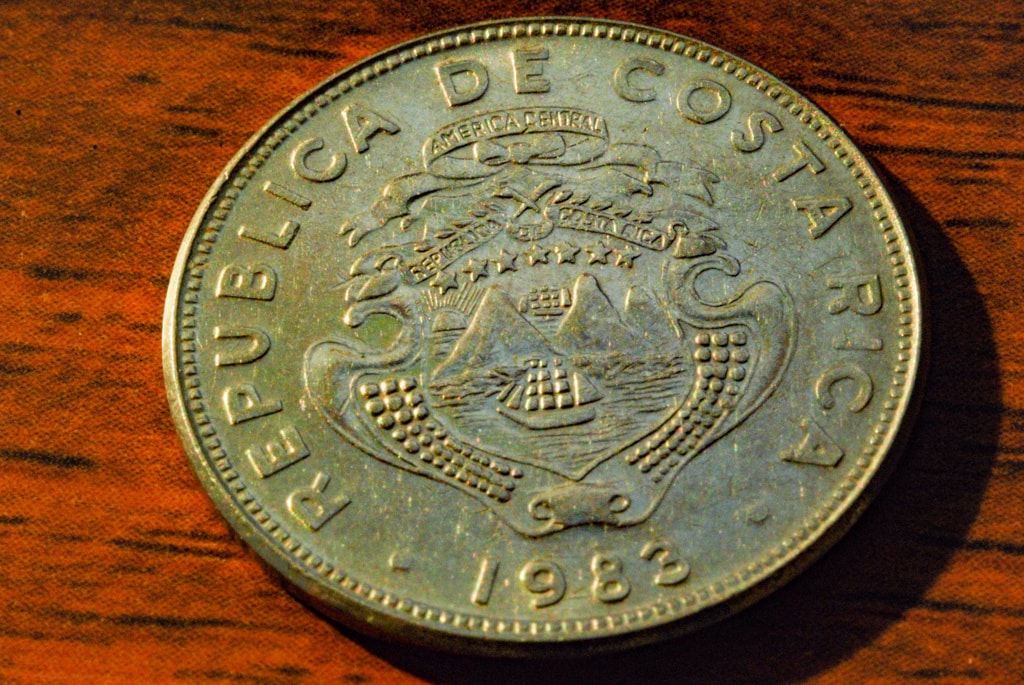
Costa Rican Colón Today
Costa Rican money is bright and colorful- like most of the rest of the world, both bills and coins are used widely. As in most of Latin America, cash is king in Costa Rica, and I highly recommend you use it- both for the experience and because it is the local way. (More on that later.)
Coins come in denominations of 1, 2, 5, 10, 20, 50, 100 and 500. Bills come in denominations of 1,000; 2,000; 5,000; 10,000; 20,000 and 50,000.
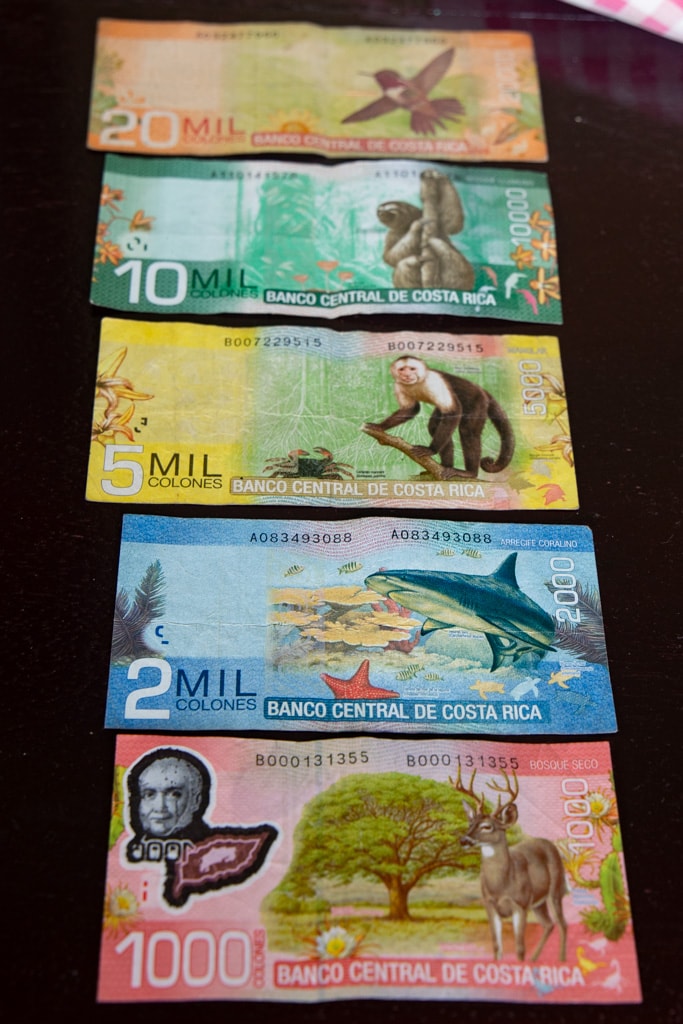
It’s also important to note that in Spanish, when writing about money we use a period in place of a comma. So one thousand colones is written as 1.000.
In 2011 new bills were introduced. Luckily the 1,000 colon bill stayed red, because in Costa Rican slang un rojo means a thousand.
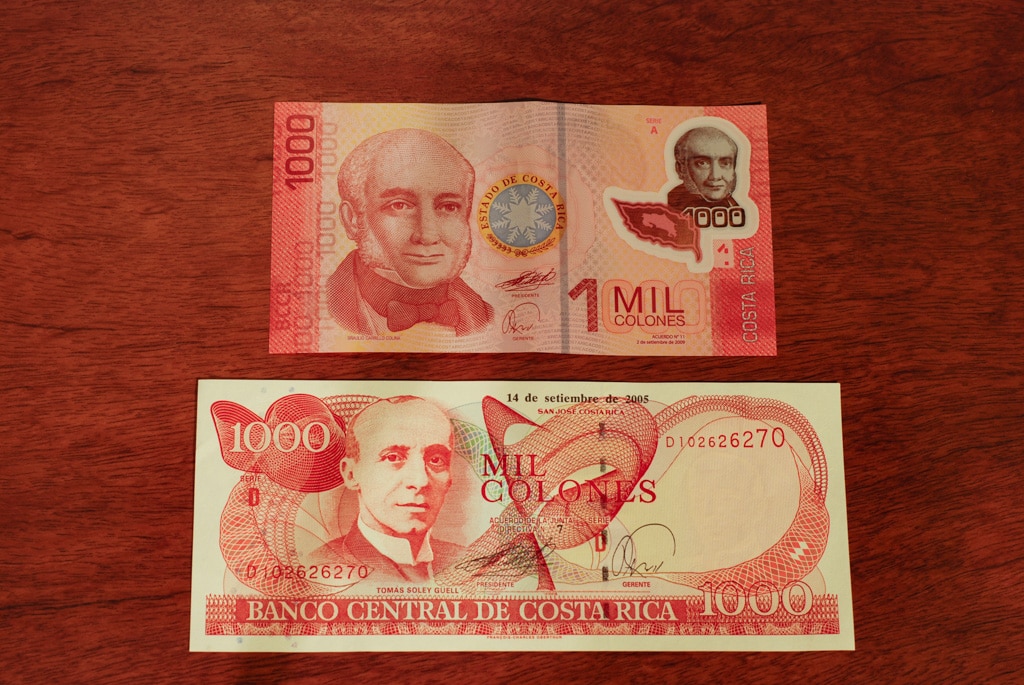
One pretty cool thing about the bills is that when you put them in a circle, the drawings from each edge become complete.
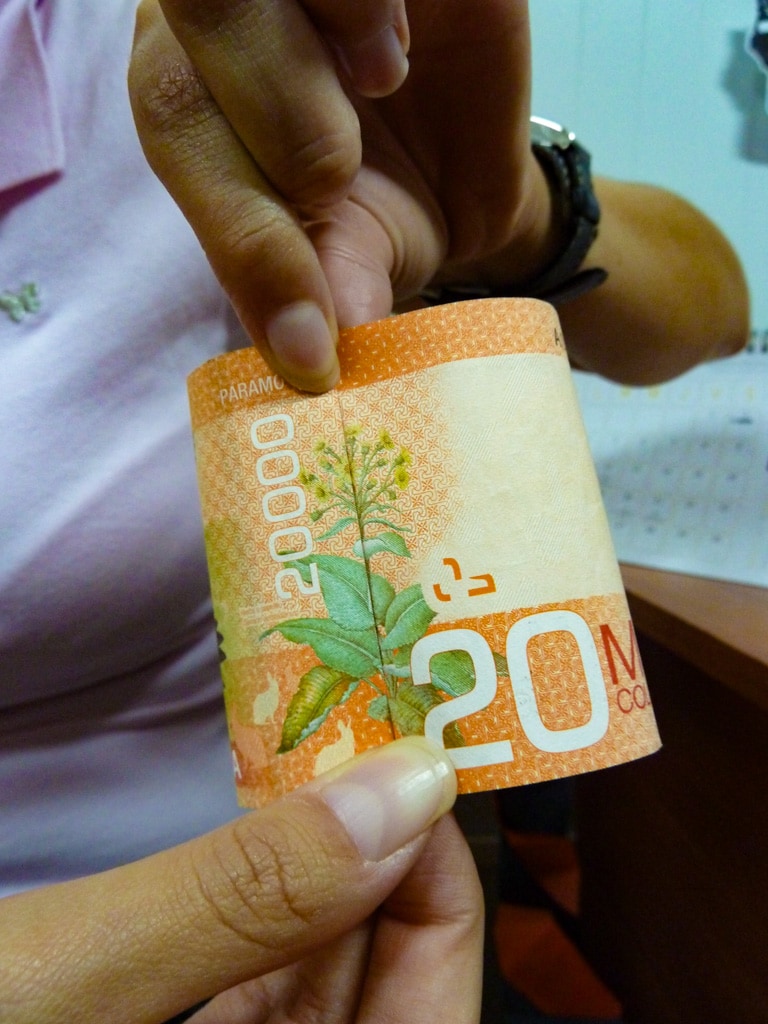
You will need to check the exchange rate lose to the time you are going. The rate from US dollar to Costa Rican colon has roughly been 600 to $1 for the last year.
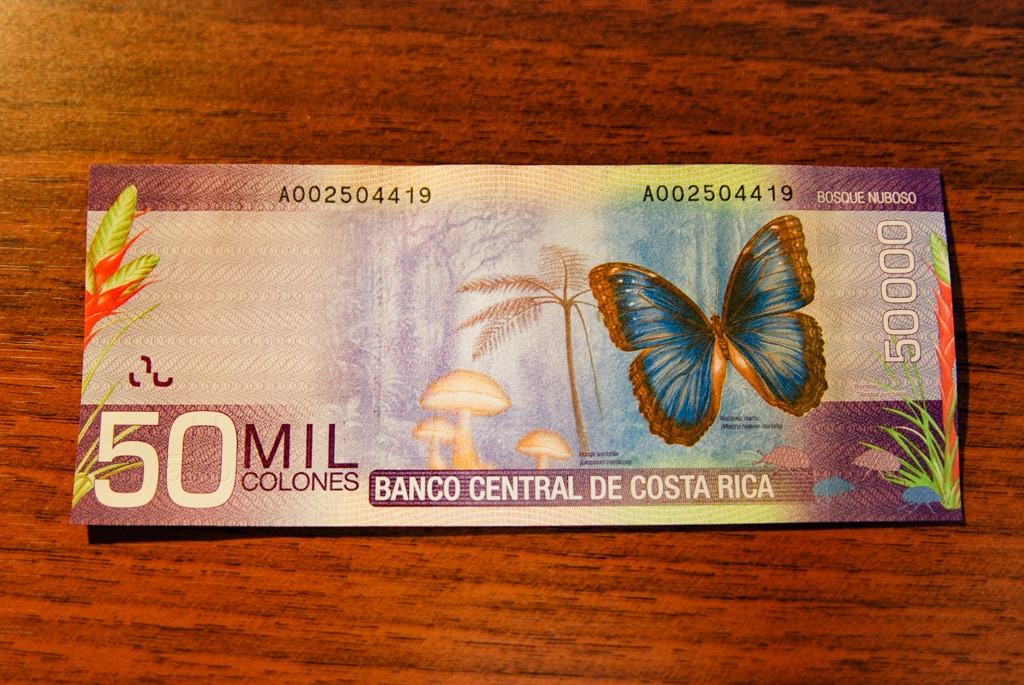
The coolest thing about Costa Rican money, in my opinion, is how gorgeous it is. A deer, a shark, a monkey, a sloth, a hummingbird, and the blue morpho butterfly are all some of the popular Costa Rican wildlife depicted on the bills in full color.
Related post: Popular Costa Rica Animal Sightings
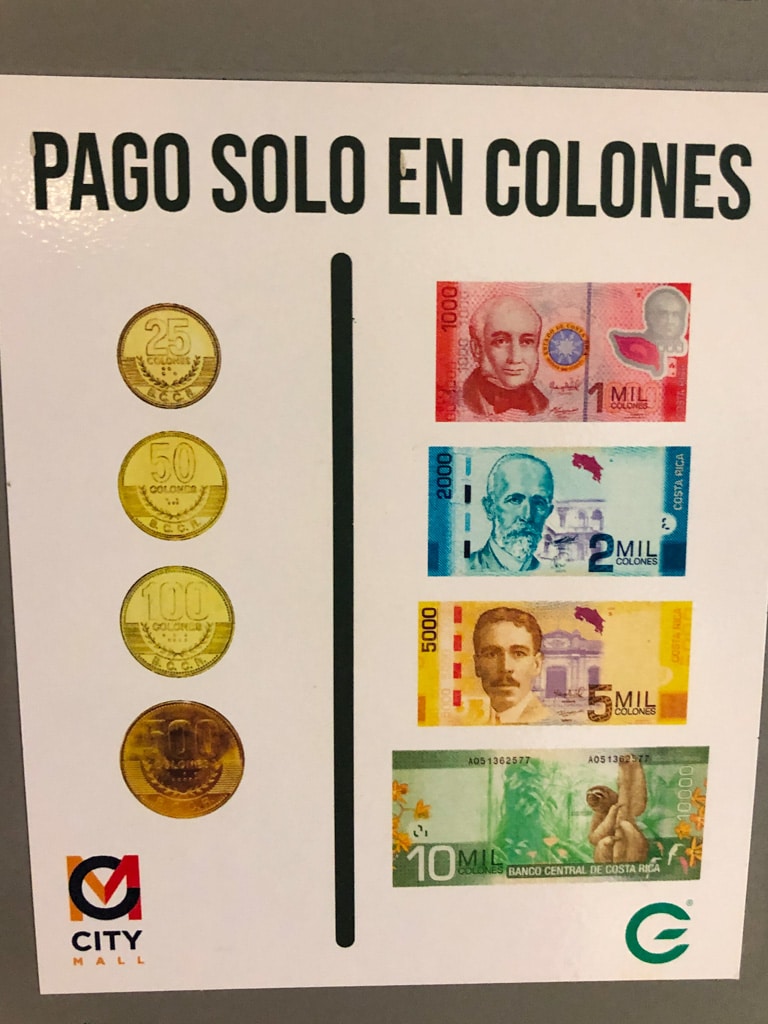
YOU’LL ALSO LOVE: Costa Rica With Kids- The Complete Guide
US dollars in Costa Rica
US dollars are widely accepted in Costa Rica. Many hotels and tours will only provide prices for tourists in dollars. It’s partly because the exchange rate fluctuates quite a bit throughout the year, and it’s partly because the dollar is a more stable currency than the colon. It’s also just to make things easier for tourists.
However, apart from hotels and tours, you cannot expect change to be given back in dollars- not even at the airport. What generally happens is you will ask to pay in dollars, and the shopkeeper will calculate your rate in colones (usually at a really crappy rate like 500 colones to the dollar) and then give you the change in local currency.
Note- the Euro is not widely accepted in cash in Costa Rica, so it’s better to convert your Euros to dollars before arriving in the country.
Related post: Guide To Costa Rican Fruit
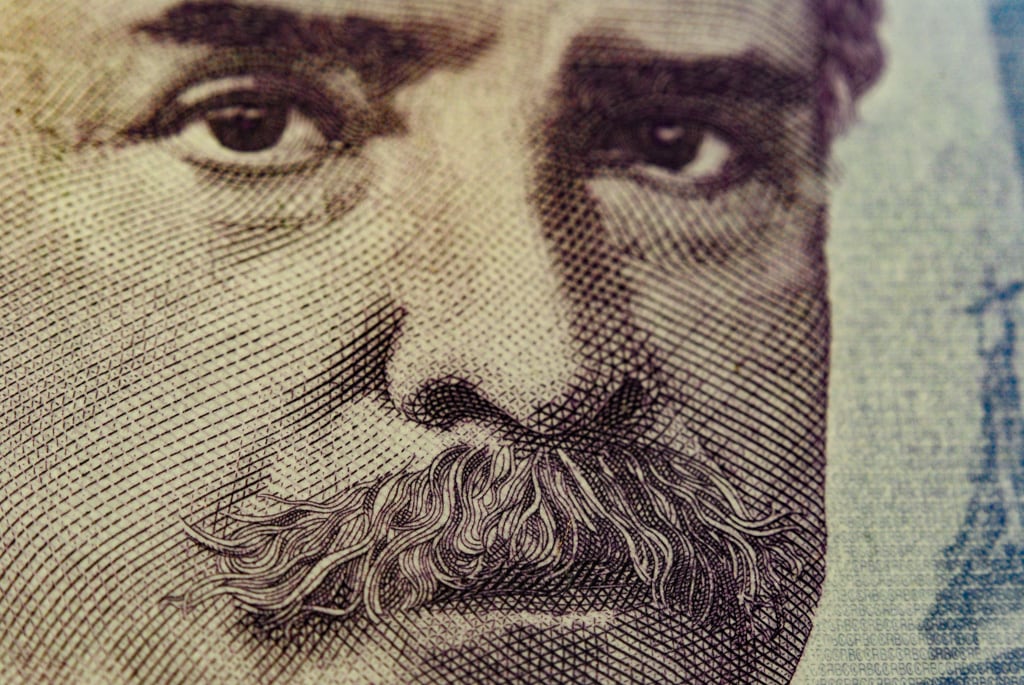
Exchanging Money in Costa Rica
There are lots of ways to get money in Costa Rica. Here I’ll outline the different ways, and provide tips on how to get the best exchange rate in various situations.
ATMs (cajero automatico)
Costa Rica has a wide variety of ATMs throughout the country, though please be aware that there are not always a ton of ATMS near many beach destinations or in rural areas. You can check on Google Maps to see if there is one near where you are traveling, or on the way.
You can use the Banco de Costa Rica (Bank of Costa Rica), Banco Nacional, Banco Popular, ScotiaBank, and HSBC ATMs usually without much problem. Your bank may charge you a transaction fee for using the ATM abroad, but with an ATM you are generally guaranteed the best exchange rate for the day.
You can also get US dollars out of some ATMS- definitely out of Banco de Costa Rica and HSBC.
My biggest advice for using your ATM card in Costa Rica is to make sure you call your bank or credit card company and let them know you will be abroad and the dates. This prevents your card from getting locked when you use the card for the first time.
Pro tip: Take a few hundred dollars in cash with you to Costa Rica- a variety of small bills, coins, and bigger bills. That’s your safety net. When you arrive at the airport, there are ATMs right at the baggage claim, and the area is safe. Take out a few hundred more dollars in colones and tuck it in a safe place. As soon as you can, pay in cash and break up the ATM bills. That way you have a variety of bills and coins in both currencies for the beginning of your trip.
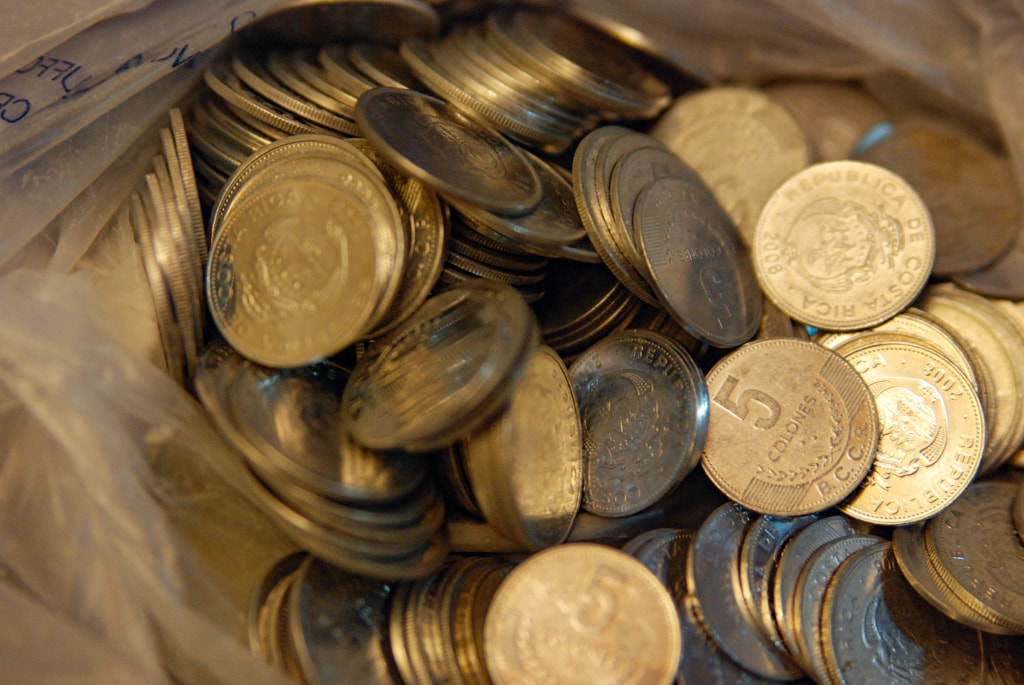
Banks
You can exchange dollars in cash at any bank in the country. You can also, generally use a credit or debit card to get cash out in colones. You’ll have to show your original passport to do this, however.
Lines in banks can be hours long, so if you are wanting a fast solution, this isn’t it.
Using credit/debit cards
Debit and credit cards are used widely in a lot of the Central Valley. Expect large grocery stores, hotels, restaurants, malls, and more to accept credit and debit cards.
Many restaurants and small businesses will pass on the 3% bank fee to you- so you will pay a bit more.
Pro tip: not everyone takes a card, especially small local businesses- which are my favorite people to support. So please do have some cash with you when traveling. It’s also handy for purchasing street food and souvenirs on the go. Public buses, markets, fruit stands, etc., do not accept cards. They also often will not keep a ton of change on hand, so it’s best to have smaller bills and change on you.
Related post: Driving In Costa Rica – Complete Guide
Traveler’s Checks
Traveler’s checks are less and less common and it can be difficult to find a place that will convert them into money for you. Better alternatives are ATMs or cash exchanges.
Cash
Currency exchange booths are found mainly in the capital and at airports. If you want to exchange cash, check the exchange rates and make sure that your bills are in good condition, as they can otherwise be refused.
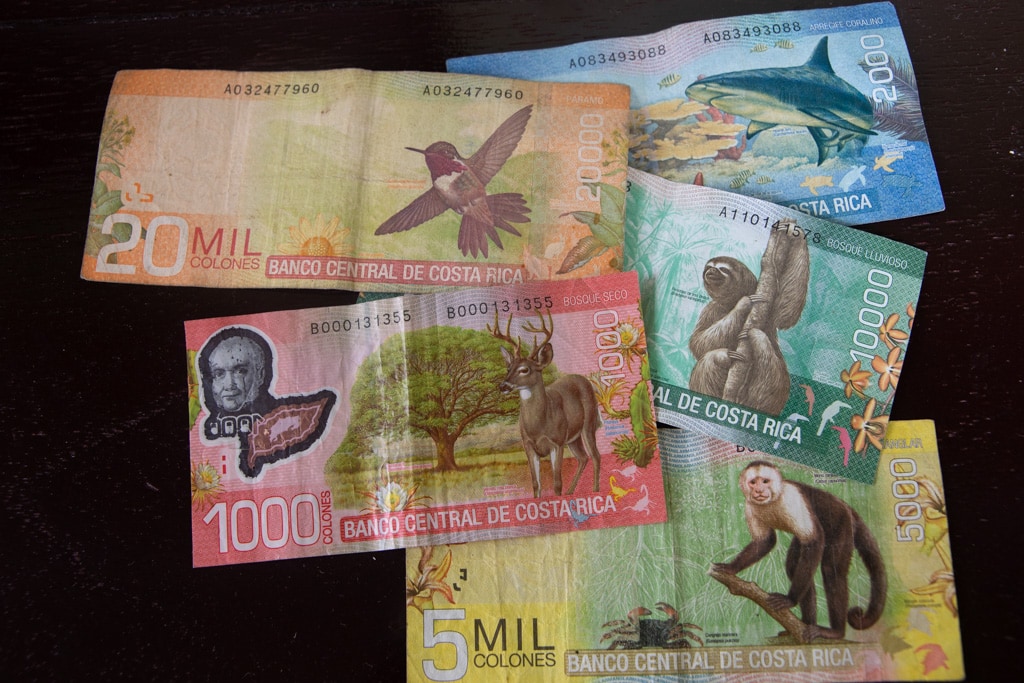
Tipping In Costa Rica
In general, Costa Ricans do not tip. However, tourists and visitors do, and it is generally expected- especially given the difficult year for Costa Rican tourism as a result of the COVID-19 pandemic.
Related post: Coronavirus in Costa Rica
Tour Guides
As in many tourist locations, tipping tour guides is good practice, especially if they seem knowledgeable, have gone out of their way to explain you things and you have had a good time with them. Tour guides are often providers in local communities and will distribute the money to their extended family.
Cash tips of between 10-20% of the cost of the tour is minimal, more is appreciated.
Waiters and Bartenders
By government law, food and drinks in Costa Rica are subject to a 13% tax and 10% service fee. The service fee is the tip- the waiter earns it whether or not the service is good. It’s important to check if the tax is included in the menu price or not- as it can be a shock to have 23% added to a restaurant bill if you aren’t expecting it.
Related post: Saving Money In Costa Rican Restuarants
Taxi and Bus drivers
You do not need to tip taxi and public bus drivers. If you hire a shuttle bus or private transfer, it is common to tip about $10 per day- more if the service is outstanding.
Other tipping advice
When thinking about tipping in Costa Rica, keep in mind that wages are low compared to the cost of living in the country. While tips are not obligatory and people are mostly genuinely nice and will welcome you back with a warm smile even though you left no tip, they make up a major part of people’s income and are a nice way to show your appreciation.
FAQ
What is the best currency to use in Costa Rica?
Costa Rican Colones are the safe option, as they are accepted absolutely everywhere. Yet, it can be more practical to pay some things in US dollars. As a rule of thumb, try to pay in the currency that is requested to avoid losing on unfavorable exchange rates.
How much is $1 US in Costa Rica?
The value varies slightly, it has been around 600 CRC to 1 USD over the last year.
What is the currency called in Costa Rica?
The Costa Rican currency is called Costa Rican Colones (CRC).
How much is a 100 colones coin worth?
Depending on the current exchange rate, 100 CRC are worth approximately 17 cents in USD.
Pin it!
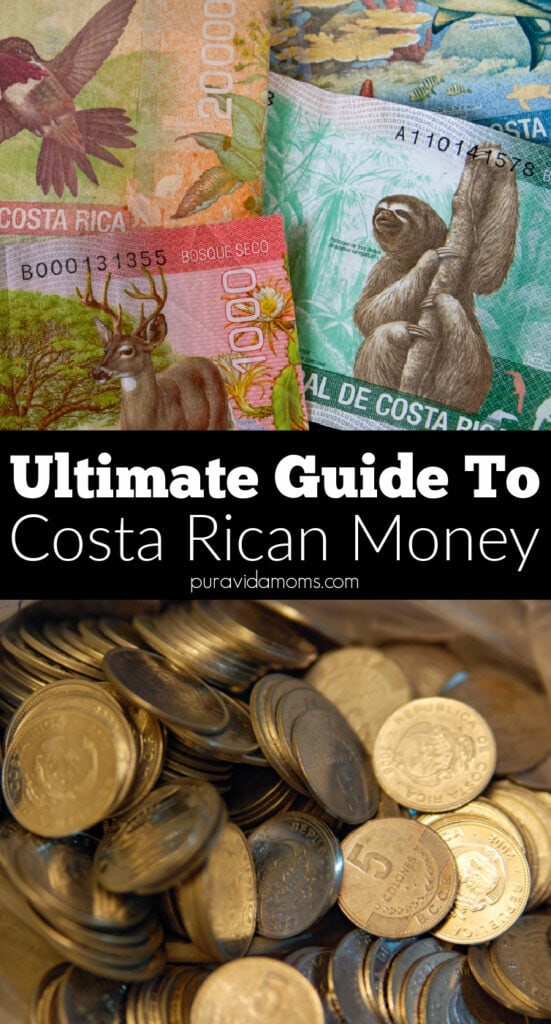

Christa Jimenez
Welcome! I’m Christa, a Spanish teacher married to a handsome Costa Rican and mother of two bilingual daughters. We’ve spent over 25 years living in and traveling to Costa Rica with our daughters, and this website is my love letter to all things Costa Rica- and to bilingual parenting too. You can read my full story here. Thanks for stopping by!



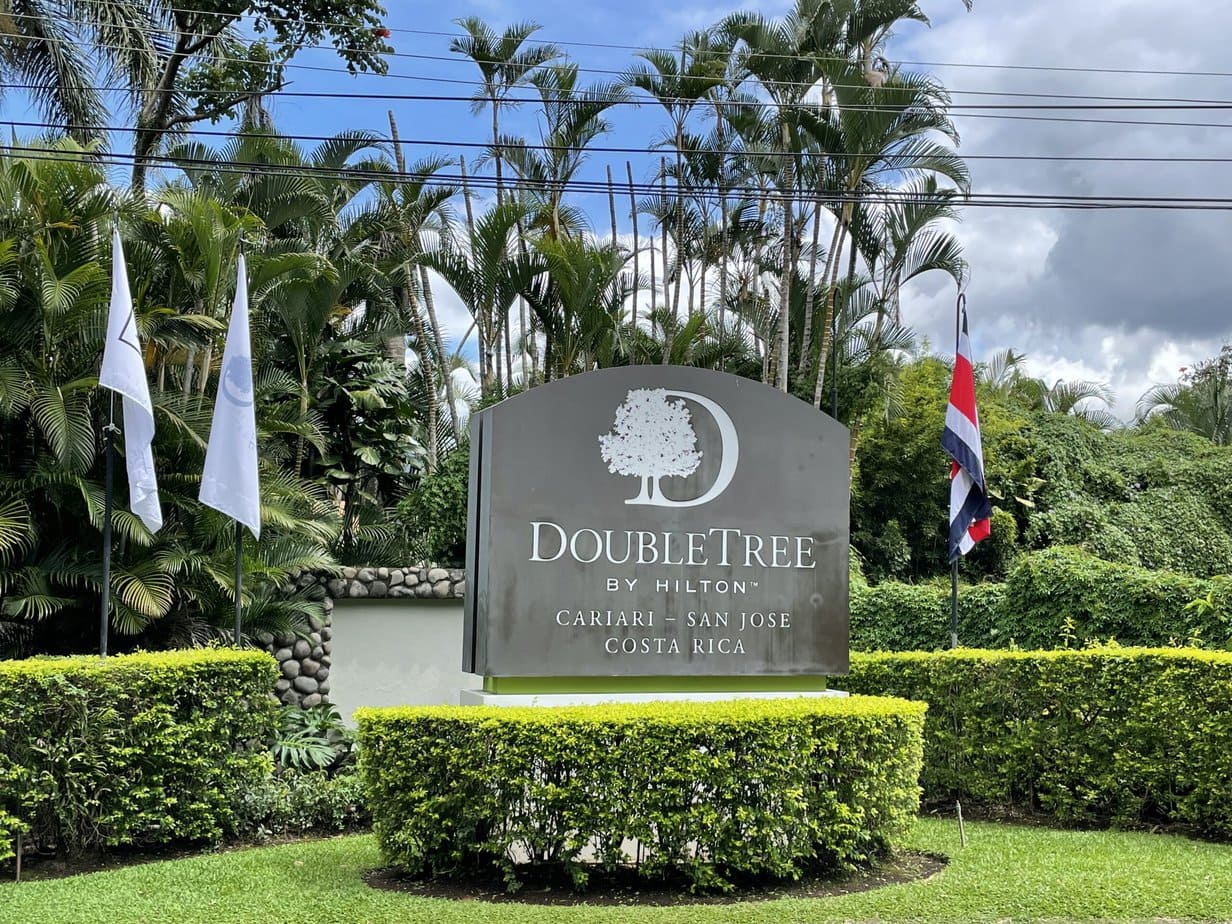

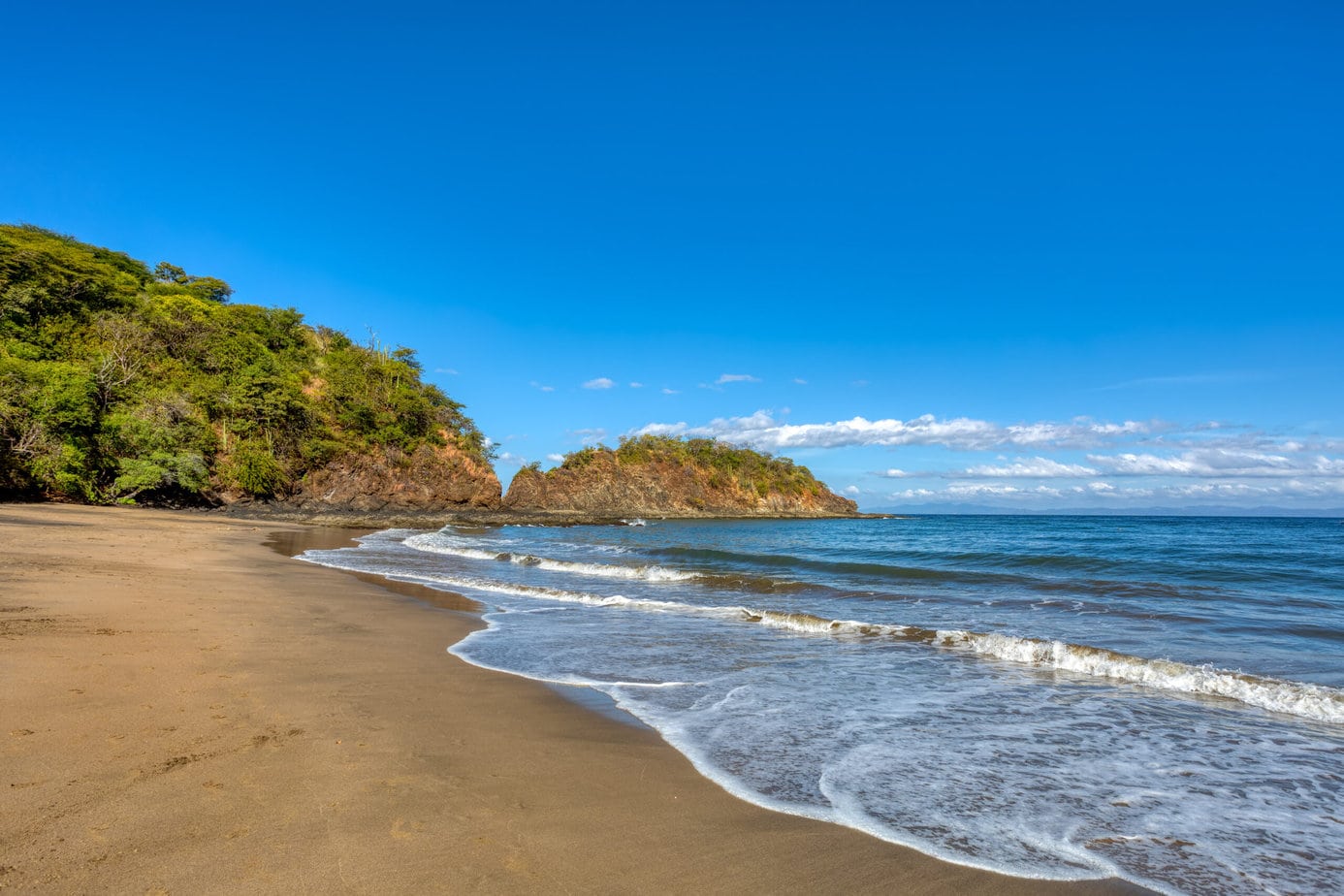
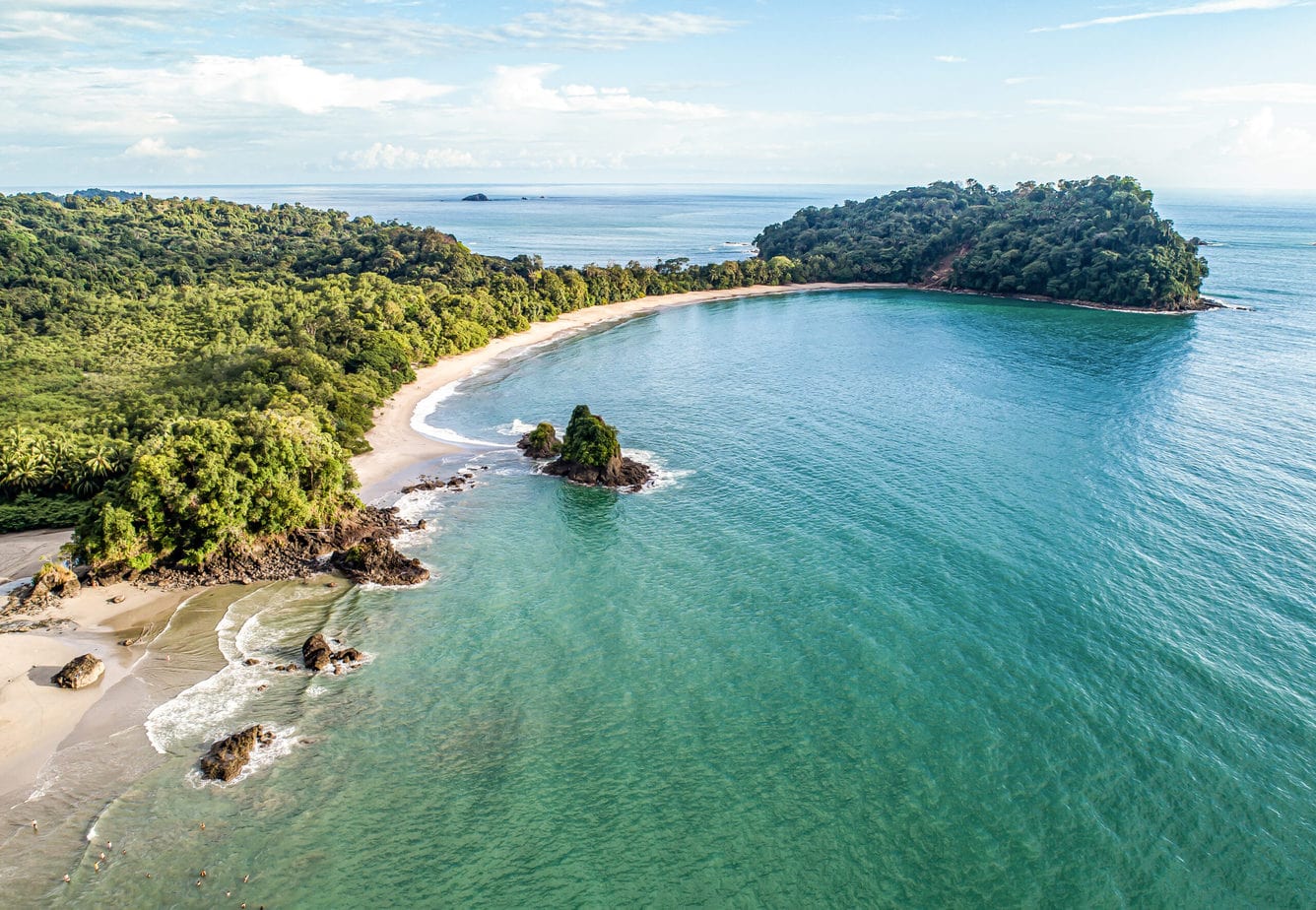

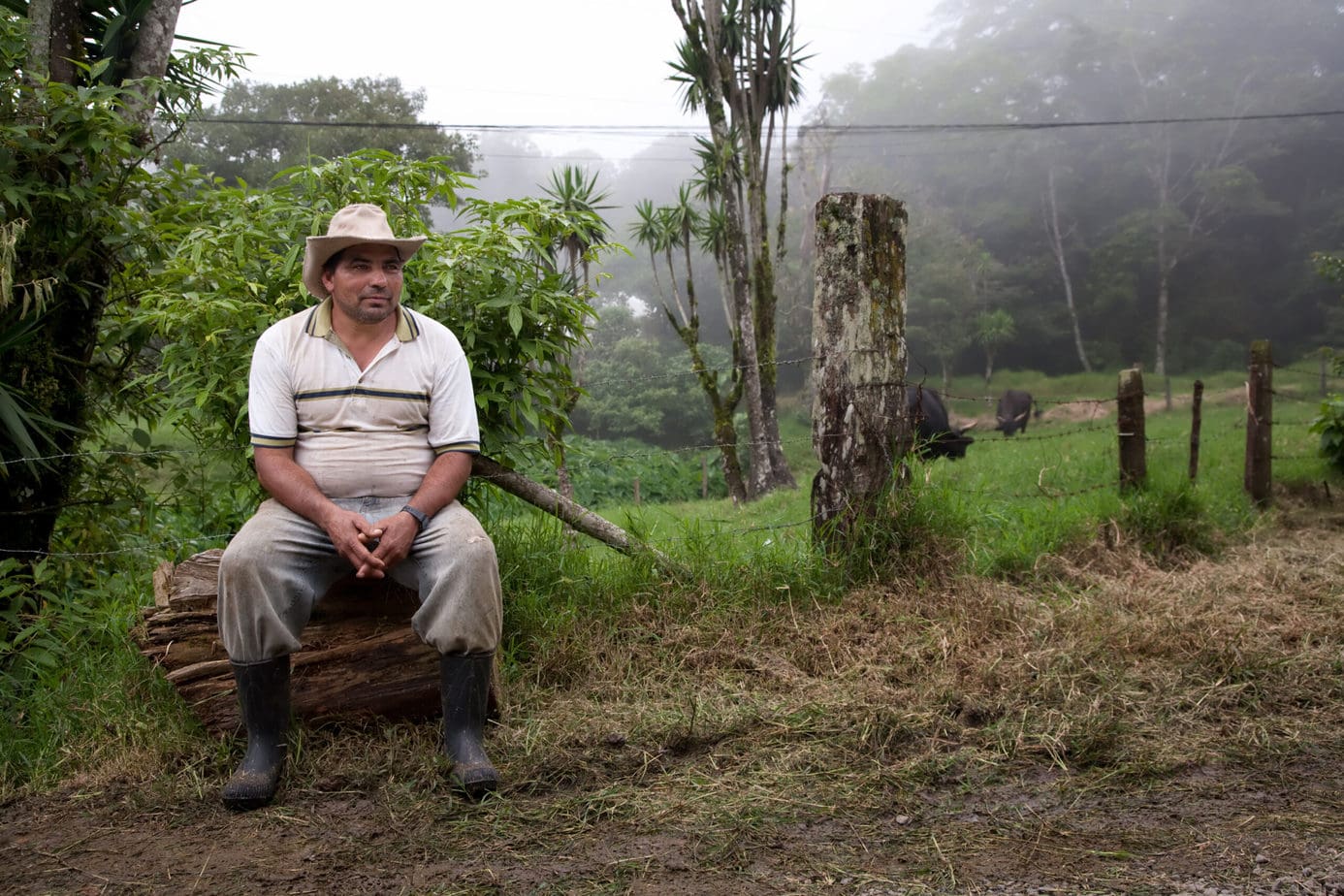
Please send me info about Costa Rican Currency. My Fiancees Family lives in San Jose, Costa Rica. I want to learn how to do the American Costa Rican Money Exchange.
What information do you need? Does this help? https://www.forbes.com/advisor/money-transfer/currency-converter/usd-crc/